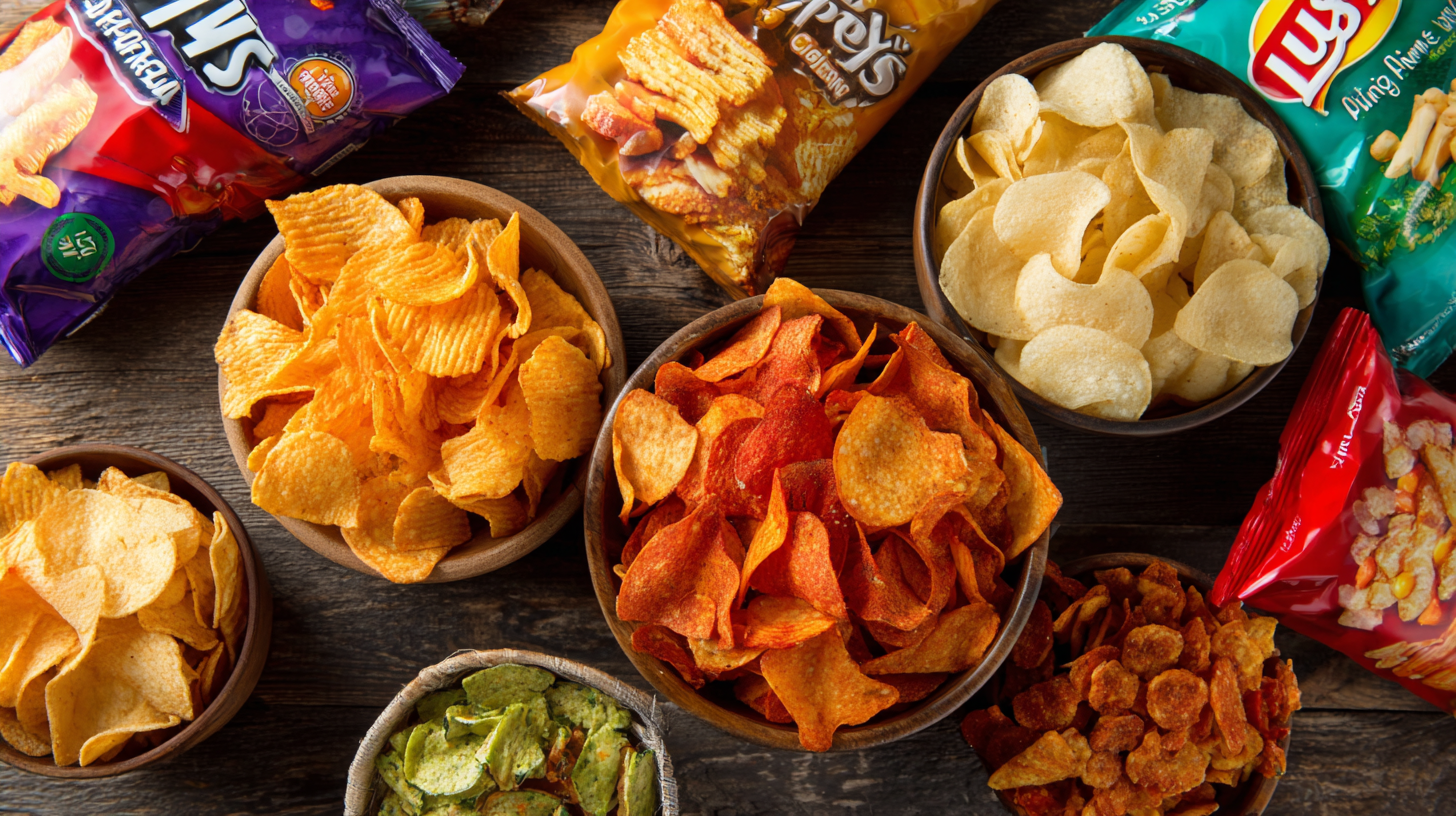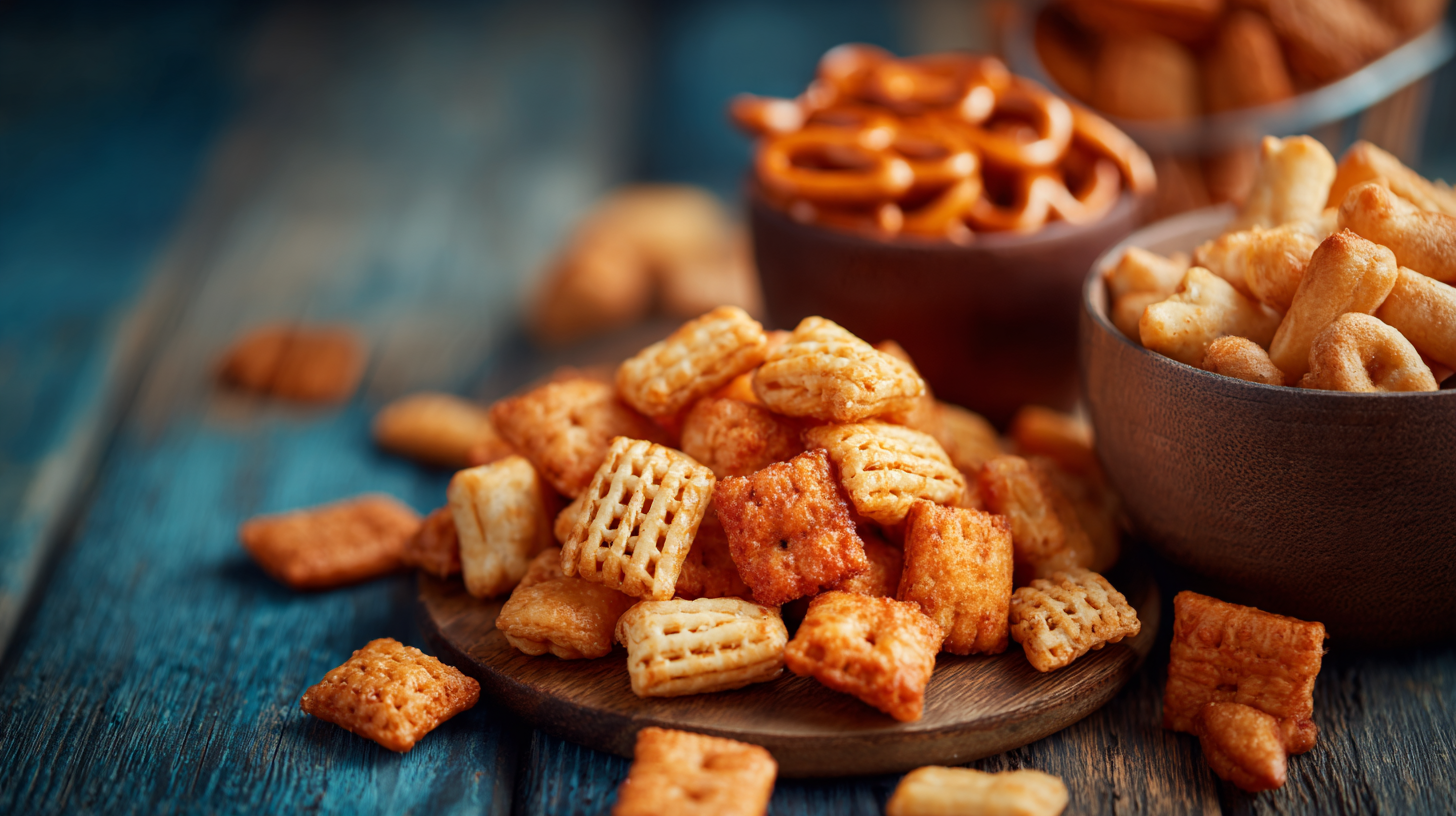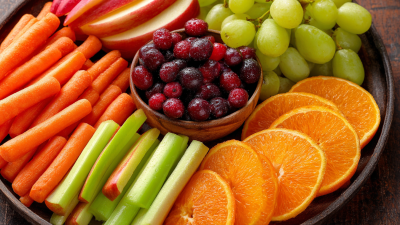2025 Top Snack Manufacturers: Innovations and Trends Shaping the Snack Industry
In the ever-evolving landscape of the snack industry, 2025 is poised to be a transformative year, driven by innovation and changing consumer preferences. As highlighted in the "2025 Top Snack Manufacturers: Innovations and Trends Shaping the Snack Industry - '2025 Top 5'", leading snack manufacturers are leveraging advancements in technology and sustainability to meet the growing demand for healthier and more diverse snack options. According to a recent report by Grand View Research, the global snack food market is expected to reach approximately $650 billion by 2025, indicating a substantial shift towards premium and health-conscious products.
Industry expert Dr. Emily Tran, a leading figure in food technology, emphasizes the significance of this trend, stating, "Snack manufacturers must adapt to the evolving tastes and dietary needs of consumers to stay competitive in a saturated market." This sentiment underscores the urgency for snack manufacturers to innovate not just in flavor variety but also in nutritional value and sourcing practices. As consumers increasingly prioritize wellness and sustainability, the industry's response will define the landscape and set benchmarks for future growth and development.
In this article, we will explore the top five snack manufacturers of 2025, delving into their innovative strategies and the key trends that are reshaping the industry. From plant-based alternatives to eco-friendly packaging, these leaders are not only defining the future of snacking but also setting standards for quality and sustainability in the market.

Emerging Flavor Profiles: How to Cater to Changing Consumer Palates
As the snack industry evolves, understanding emerging flavor profiles is critical for manufacturers aiming to cater to changing consumer palates. Today’s consumers are increasingly seeking bold and diverse tastes, driven by a desire for global culinary experiences. Flavor combinations that blend sweet and savory, as well as innovative uses of spices and herbs, are particularly resonating with adventurous eaters. From tangy sriracha-infused popcorn to exotic fruit blends in energy bars, the horizon of snack flavoring is expanding rapidly.

Tips: To keep up with these trends, snack manufacturers should invest in market research to identify regional flavor trends and preferences. Collaborating with culinary experts can also help brands innovate with new taste combinations that surprise and delight consumers. Additionally, leveraging social media can provide insights into which flavors resonate with different demographics, allowing brands to tailor products to meet evolving tastes.
With health-conscious choices in mind, many consumers are looking for snacks that not only taste good but also offer nutritional benefits. Incorporating superfoods like turmeric, matcha, or spirulina into snacks can appeal to this demographic while capitalizing on the growing interest in wellness. Creating products that balance great taste with health benefits will be key for manufacturers wanting to stay relevant in this competitive landscape.
Harnessing Technology: How to Leverage AI for Snack Innovation
The snack industry is undergoing a remarkable transformation, largely fueled by advancements in technology. According to a recent report from Grand View Research, the global snack food market is expected to reach $529 billion by 2025, highlighting the growing demand for innovative and convenient snack options. One of the most significant drivers of this trend is the integration of artificial intelligence (AI) in product development and consumer engagement strategies. Snack manufacturers are leveraging AI to analyze consumer preferences, predict trends, and optimize their supply chains.
AI technology allows companies to make data-driven decisions, improving product formulation and personalization. For instance, AI algorithms can analyze vast amounts of consumer feedback and sales data to identify emerging flavors and textures that resonate with targeted demographics. A study by McKinsey found that businesses using AI in their product development process see an average increase of 15% in innovation success rates. This shift is particularly beneficial as consumer preferences evolve towards healthier, sustainable, and more diverse snacking options, pushing brands to innovate rapidly while maintaining cost efficiency.
Moreover, AI-driven insights enable snack companies to create personalized marketing campaigns that resonate with specific consumer segments. By employing machine learning techniques, brands can assess purchasing behaviors and tailor their messaging accordingly, enhancing customer loyalty and engagement. As noted in a report by Statista, 70% of consumers express a preference for brands that offer personalized experiences, showcasing the vital role AI plays in shaping not just product offerings but entire marketing strategies within the snack industry.
Sustainable Practices: How to Integrate Eco-Friendly Solutions in Snack Production
The snack industry is evolving rapidly, particularly with the increasing emphasis on sustainable practices. As consumers become more eco-conscious, manufacturers are facing pressure to integrate eco-friendly solutions into their production processes. This shift is evident in the adoption of compostable and recyclable packaging materials, which reflect a broader trend towards reducing reliance on plastics. By innovating in packaging design and material choices, snack producers not only meet regulatory demands but also align with consumer values.
Tips: To enhance sustainability in snack production, consider evaluating your supply chain for eco-friendly sourcing. Engaging with suppliers who prioritize sustainable practices can significantly reduce the environmental impact of your product. Additionally, investing in research and development for biodegradable materials can lead to advancements that appeal to the growing market of eco-aware consumers.
The Sustainable Packaging Market is experiencing a surge as brands are compelled to adopt greener solutions. This includes redesigning packaging to be not only functional but also visually compelling and responsible. Companies that embrace this transition are likely to gain a competitive edge, establishing themselves as leaders in the better-for-you snack segment. As the movement towards sustainability continues to shape the industry, understanding current trends will be crucial for businesses aiming to thrive in 2025 and beyond.
Health-Conscious Choices: How to Create Nutritious Snack Alternatives
The snack industry is undergoing significant transformation as health-conscious choices become increasingly important to consumers. With the projected market size of sunflower seeds expected to reach $134.848 million by 2025, there is a clear trend towards nutritious snack alternatives that cater to growing health demands. This includes a surge in demand for ready-to-eat seafood snacks, driven by consumers’ preferences for high-protein, health-focused options, which are forecasted to expand at a CAGR of 5.5% from 2025 to 2034.

Furthermore, the functional foods and natural health products market is anticipated to grow to $73.394 billion by 2025, reflecting a broader consumer shift toward functional snacking options. This includes a notable rise in plant-based snacks and clean-label products, emphasizing convenience and sustainability without compromising on nutrition. The compound annual growth rates for various segments, such as protein bars and granola bars, signify that innovation in health-conscious snack alternatives will continue to define the future landscape of the snack industry.
Trendy Packaging: How to Design Eye-Catching and Functional Snack Packaging
In the evolving landscape of the snack industry, packaging plays a crucial role in attracting consumers and enhancing the product experience. Innovative designs not only capture attention on the shelves but also communicate the brand's values and the product's benefits. Eye-catching packaging incorporates vibrant colors, unique shapes, and sustainable materials, aligning with current trends toward eco-friendliness and health consciousness. These elements combine to create a visual storytelling experience that resonates with modern snack enthusiasts.
Tips for designing impactful snack packaging include utilizing transparent windows to showcase the product, which helps build trust and allure. Additionally, incorporating resealable features can boost convenience and ensure freshness, appealing to busy lifestyles. Brands should also consider using minimalist designs with clear typography to convey information quickly, allowing consumers to make informed decisions at a glance. Ultimately, combining functionality with aesthetic appeal is key to standing out in a competitive market.


